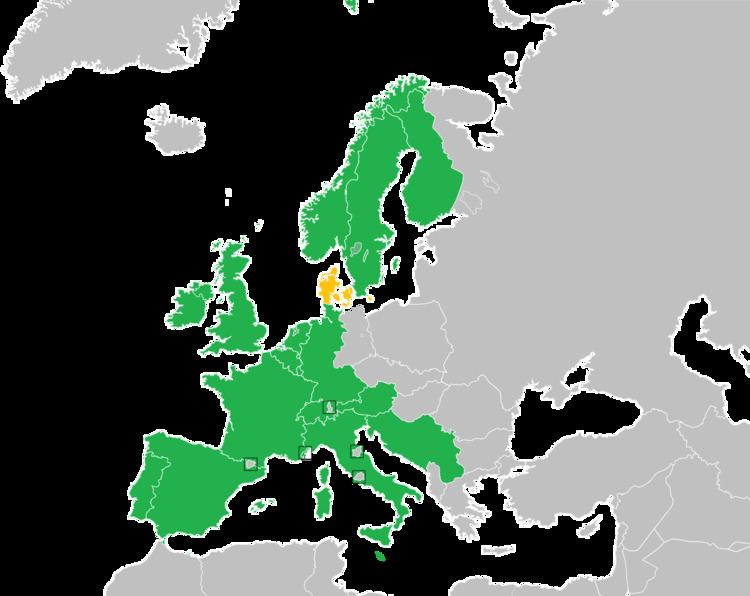Final 25 March 1972 Executive supervisor Clifford Brown | ||
 | ||
Venue Usher HallEdinburgh, Scotland, United Kingdom | ||
The Eurovision Song Contest 1972 was the 17th annual Eurovision Song Contest. It was held in Edinburgh, United Kingdom. Although Monaco had won the previous year's contest, the principality was unable to meet the demands of hosting the event (on 31 January 1972, Monaco's ruler Rainier III of Monaco received a letter from the European Broadcasting Union about holding the 1972 Eurovision in Monaco, he was unable to provide a venue, the props and everything else so in February 1972, Prince Rainier declined because of the expenses).
Contents
- Location
- Format
- Participating countries
- Conductors
- Returning artists
- 10 points
- International broadcasts and voting
- References
Séverine made the trip to the Scottish capital Edinburgh to pass on the 'Grand Prix' to Vicky Leandros. However, she looked thoroughly uninterested in the Monegasque entry when seen by viewers checking her watch before the song was performed. This marked the fourth time that the contest was held in the United Kingdom. However, this is the first (and, so far, only) time that the UK hosted the Eurovision Song Contest in a venue outside England.
Luxembourg's win was their third. Yves Dessca also wrote the text for "Un Banc, Un Arbre, Une Rue" that won in 1971, and other than conductors of the winning song, became the second person to win the Contest twice, the first person to win for two different countries and the first person to win two years in a row.
Location
The 1972 Eurovision Song Contest was hosted by Edinburgh, the capital city of Scotland. Usher Hall, the venue for the 1972 contest, is a concert hall, situated on Lothian Road, in the west end of Edinburgh, Scotland. It has hosted concerts and events since its construction in 1914 and can hold approximately 2,900 people in its recently restored auditorium, which is well loved by performers due to its acoustics. The Hall is flanked by The Royal Lyceum Theatre on the right and The Traverse Theatre on the left. Historic Scotland has registered the Hall with Category A listed building status.
Format
The stage design included a screen to introduce and accompany the on stage competing performances, and to show an interval act and voting sequence that were done at Edinburgh Castle. Before each country's performance, a picture of each song's performers along with their names and the song's title were projected on the screen, and during each performance, animated spiral shapes were projected as additional visual effect. The interval act was performed at the outside vast Esplanade of the Great Hall of Edinburgh Castle. The jurors were stationed in the safety of the castle, and watched the competing performances at Usher Hall on TV.
Each country had two jury members, one aged between 16 and 25 and one aged between 26 and 55. They each awarded 1 to 5 points for each song, other than the song of their own country. They cast their votes immediately after each song was performed and the votes were then collected and counted. For the public voting sequence after the interval act, the jury members were shown on the stage's screen with each lifting a signboard with the number between 1 and 5 for each song, as a visual verification of the scores they had awarded earlier. The eventual winner, Luxembourg, remained in a strong scoring position throughout the voting.
1972 was the first year that had no ties in the voting. Every year prior to 1972, at least two countries had received the same score.
Participating countries
All countries who participated in the 1971 contest were present this year; with no withdrawals, returns, or débutantes. The Irish entry was in Irish, so far the country's only entry in that language.
Conductors
Each performance had a conductor who maestro the orchestra.
Returning artists
Four artists returned to the competition this year. Luxembourg's Vicky Leandros who last performed for the nation in 1967; Carlos Mendes for Portugal who last participated in 1968; Swedish entry Family Four who returned for a second consecutive year; and Yugoslavia's Tereza Kesovija who previously represented Monaco in 1966.
10 points
Below is a summary of all perfect 10 scores that were given during the voting.
International broadcasts and voting
Each national broadcaster sent a commentator to the contest, in order to provide coverage of the event in their own native language. Apart from the participating countries, the contest was transmitted in live for the first time in the continent of Asia, in the countries Japan, Taiwan, Thailand, the Philippines and Hong Kong. Brazil and Greece also provided live broadcasting. Iceland and Israel broadcast it a few days later. The table below shows the order in which the votes were cast along with each country's two jury members, commentator and broadcasting station.
